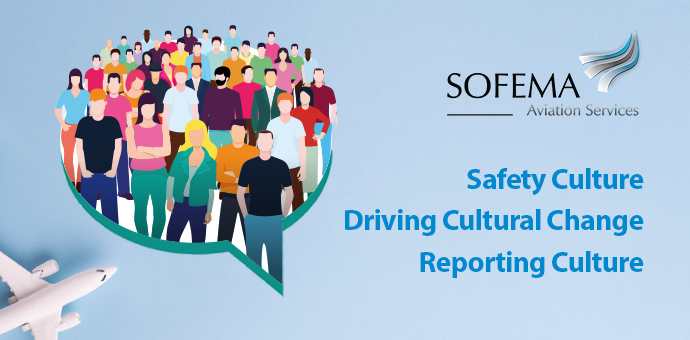Sofema Aviation Services considers elements related to delivering cultural change in the workplace as an enabler to drive improvements.
Introduction
The Aviation System contains multiple processes which interconnect and overlap providing an impact on each other. Typically, the safe delivery of all such processes plays a significant role in meeting the business objectives of ensuring safe delivery of the aviation product.
Cultural interfaces deliver an inevitable impact on our aviation system, along with environmental threats and airline operational threats. Being able to acknowledge the existence of such cultural exposures raises awareness of the threat potential to our safety system and provides valuable input into the process to develop mitigations.
Culture within the Operational Environment may impact any of the following elements:
- The international and local regulations governing aviation traffic
- The airline’s policies and procedures
- Aircraft
- Manuals and other documentation
- Maintenance, and ground equipment
- Air Traffic Control
- Airports
- Passengers and their expectations
Definitions Related SMS & Culture
Culture is “characterized by the beliefs, values, biases and their resultant behaviour that are shared by members of a society, group or organization.” – ICAO Doc 9859
“Safety Culture” refers to the ways that safety issues are addressed in the workplace. It often reflects “the attitudes, beliefs, perceptions and values that employees share in relation to safety.”
There is both real and empirical evidence which identifies human error as a pre-cursor in over 80% of incidents and accidents. In fact, if we are to dig a little deeper both human behaviour as well as various cultural aspects are by far the main contributing agent.
Interpretation of elements which are related to or caused by cultural influences can easily become quite subjective with different interpretations depending on the analyst.
Driving Cultural Change
To bring about cultural change within the organization requires both “top-down” leadership as well as “bottom-up” engagement, as well as the required resources, framing policies and full commitment.
There are several constraints that need to be understood as they directly impact the challenge to drive cultural change.
Management Culture – Production Vs Protection
Concerns the inherent conflict between production and protection requirements.
The production goals must be met in order to ensure profitable business operations and protective goals to ensure safe operations.
When production elements dominate the need for “protection” the negative impact of “taking a risk” approach (at whatever level risk is taken) with a subsequent lack of focus on organizational safety system interest, tends to send wrong signals and affects the safety behavioural aspects of the individual itself.
Reporting Culture
An effective reporting system can be considered as the backbone of a robust SMS system. Working to promote an effective balance, together with a non-punitive reporting system with an effective voluntary reporting culture driven by the management ensures an effective safety culture in place.
Further Information Regarding Forthcoming SMS Training
Safety Management Systems – Aviation Risk Management – 5 Days – Sofia, Bulgaria
The course will run from 9 am to 5 pm on February 17th until February 21st 2020
Details may be found here
Or see SAS’ Website www.sassofia.com or email office@sassofia.com
Tags:
aviation system safety, cultural change, reporting culture, Safety Culture, SMS




